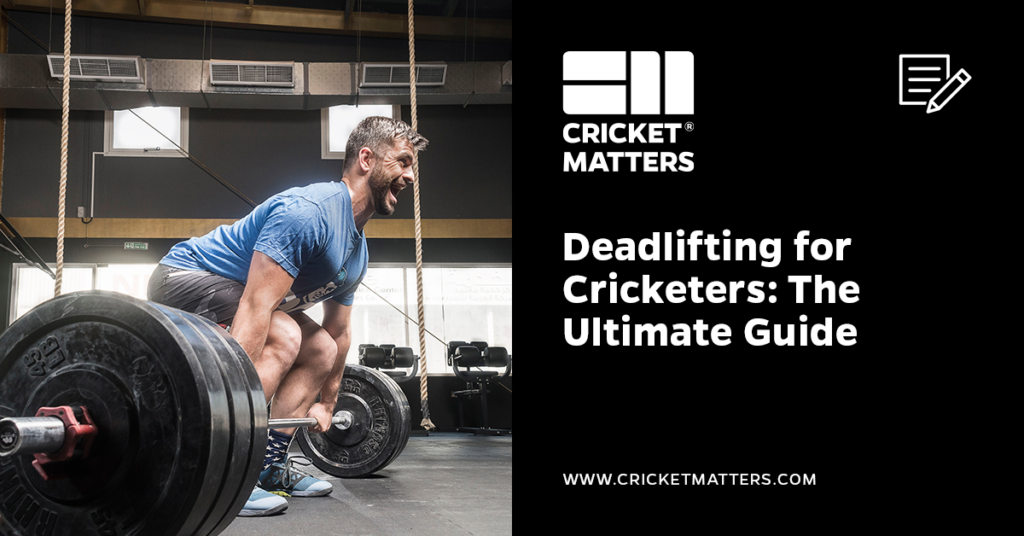
I hope you enjoy reading this blog post.
James Breese, Cricket Matters FounderIf you need my help with cricket coaching, strength and conditioning, injury rehab, or nutrition, click here.
This is the ultimate squat workout for cricketers.
If you’re a cricketer who wants to build explosive, powerful legs and want to hit the ball harder or bowl faster, this is for you.
Let’s dive right in.
Table of Contents
Introduction
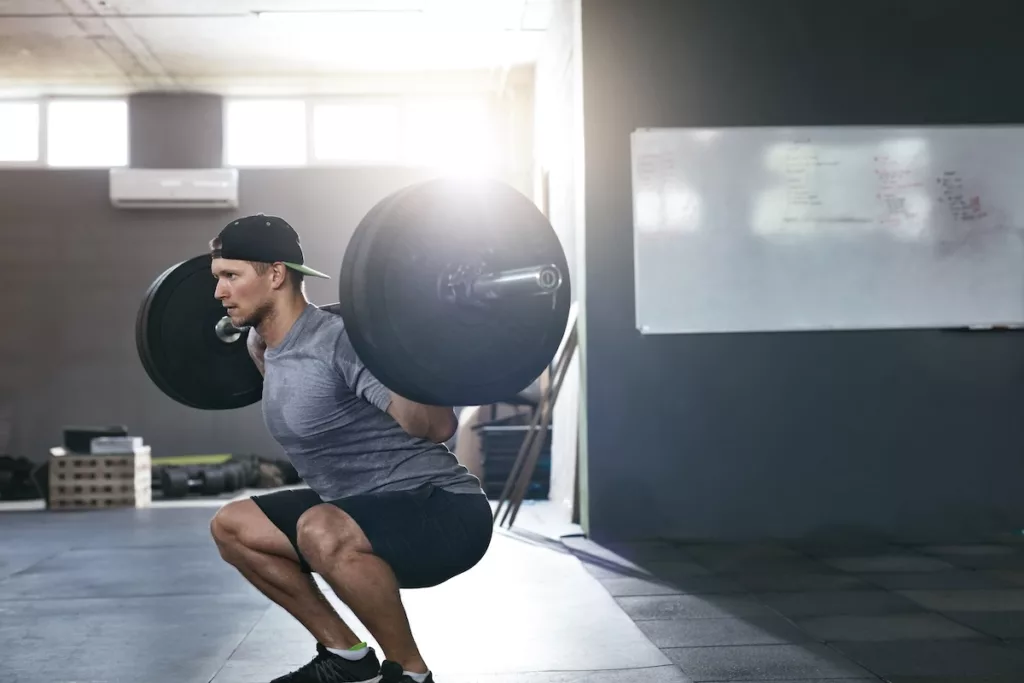
Ah, leg day.
Nothing strikes fear into a cricketer when they enter the gym as much as leg day.
It’s probably why so many cricketers choose to skip it all together – because it’s so damn hard and takes a certain type of person to really thrive from the pain of going heavy with them.
I can tell you from experience, no other workout affects my central nervous system as much.
It can turn me into a cowering, shivering wreck by the end of it and leave me so dazed and confused I slur my speech for hours afterwards.
The human body and the functions it can perform are an amazing amalgamation of millions of years of evolution and adaptation.
Squatting is a fundamental human movement.
We should be able to enter the squat position multiple times per day to get up and down and occasionally pick up heavy things.
We should be able to remain in the deep squat position comfortably for long periods as we socialize and eat.
In fact, even our digestive system is perfectly aligned to pass waste while in the deep squat.
Though the squat movement is something we do every day, it’s still a skill we can either improve or lose.
The human body is the great adaptor and will acclimate to any stimulus that is regularly applied.
Modern society leaves us cricketers sitting more than ever before. The perils of prolonged sitting are well-established.
It boosts your chances of developing everything from heart disease to cancer and diabetes, taking years off your life.
It can also severely impact your ability to squat and squat well.
That means when we add squats to your training program, we need to take your lifestyle into consideration as well.
Sitting too long can restrict blood flow causing gluteal amnesia, which can lead to hip pain, lower back aches, and problems with your ankles.
The glutes will fail to fire properly even when performing exercises targeting the glutes.
When your glutes shut down due to lack of activity and stimulus, it causes strain on other muscles and joints and produces an effect where smaller muscles have to do the job of the much larger and more capable gluteus maximus.
Muscle tightness in the hips and the thoracic spine can also cause havoc up and down the chain of your body.
If you aren’t flexible in those areas, your gluteus maximus can’t access enough force to engage fully.
The glutes need lots of range of motion to activate and do their job as intended.
All of this is vitally important to consider when prescribing squat workouts for cricketers or creating a squat program for cricketers, as a significant number of them are simply not ready to squat – yet!
I want to show you how we tackle the mighty squat to improve performance on the cricket and get you squatting more and hitting the ball harder—a lot harder.
Are You Ready to Complete the Ultimate Squat Workout?
I think this is probably one of the most important questions to ask yourself before you even attempt squat workout.
You see, if you type into Google “squat program”, you will be presented with hundreds of the biggest and most badass squat programs ever written.
The Smolov Russian Squat routine is often at the very top of the list.
It lures you in with a promise of adding up to 50kg to your squat in just 13 weeks. But Smolov and any of its counterparts are not routines for the faint hearted.
You will not enjoy the squatting, you will not look forward to it, and you will want to skip workouts.
They are advanced routines geared towards powerlifters – NOT cricketers.
As cricketer, I want to jump, sprint, jog, dive, and play cricket with the balance and flexibility of a cat, and feel great about myself.
Sorry powerlifters, but how many of you can say that you have all of that in the middle of a training cycle?
Squatting only with a loaded barbell leads to a major issue: The barbell always wins.
You keep loading more and more weight until you eventually crumble. I’ve seen so many unnecessary injuries from barbell training because of that urge to keep going heavier.
There is always a fall after the peak, and it’s never a pretty site.
I’m not saying you should never use a barbell to squat as a cricketer, but you do have to build up to it.
You need to know where you are on the squat continuum and earn the right to take it on.
Before we get to the semantics of what type of squat exercise is right for cricketers, we need to determine if you are ready to start a real squat program.
Mobility Assessments for Squatting
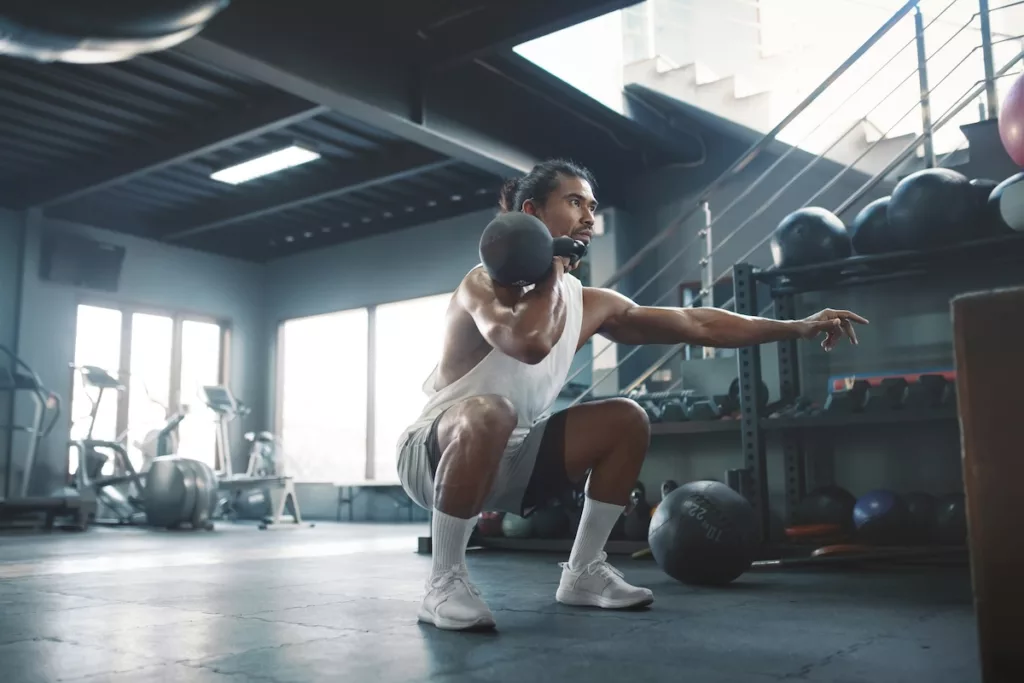
Here at Cricket Matters, we determine this by assessing your basic mobility and strength levels.
Let’s look at the mobility assessments first:
Test 1: Face Wall Squat – Hands Up. Goal = Less than 6 inches.
How far away from a wall, with your hands UP can you squat below parallel? Stand with your feet shoulder-width apart and pointing slightly outwards, less than 45 degrees. Put your arms straight overhead, hands together, fingers interlocked, and biceps touching ears. Squat down to below parallel (bum drops below height of knees) and hold for three seconds before coming back up. Keep your heels on the ground.
Test 2: Deep Squat Sit Test. Goal = 10 minutes.
How long can you sit in a deep squat position with your heels down? Your feet should be turned out no more than 45 degrees, and your upper legs must be below parallel with the ground (so your bum must be lower than your knees).
Keep your bum below your knees at all times.
The deep squat pattern is part of so many functional movements.
It’s a move that challenges total body mechanics and neuromuscular control when performed properly.
We essentially use it to test bilateral, symmetrical, and functional mobility and stability of the hips, knees, and ankles.
If you don’t own these basic mobility patterns and you start to add load, you’re just loading weight onto dysfunction and opening up yourself to a world of potential injury issues.
If you’re unable to hit these standards, it doesn’t mean we won’t get you squatting, it just means we first need to focus on improving your squat pattern and addressing the potential mobility restrictions in your hips, ankles, and thoracic spine.
Strength Assessments for Squatting
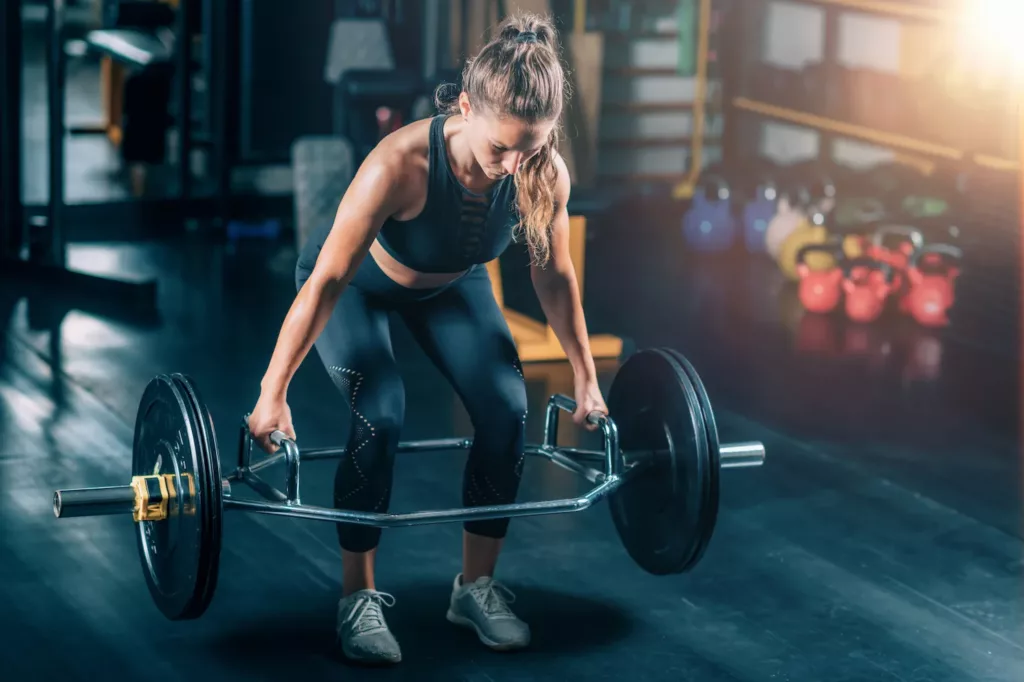
If you hit the mobility standards, we will assess the following strength standards. It’s a simple as are these safely achievable? Yes or no:
Deadlift: Using a trapbar perform a deadlift up to a maximum of five reps using the weights outlined. Standards: Men: 1.5 x Bodyweight Women: 1.25 x Bodyweight.
75% Bodyweight Rear Elevated Split Squat, Left and Right: Choose two weights equaling 75% of your bodyweight. Perform eight reps on your LEFT side. Rest one minute, and repeat on the RIGHT side.
75% Bodyweight Farmer Carry: Pick up two weights equaling 75% of your total bodyweight and walk for 90 seconds WITHOUT having to put either weight down or re-gripping at any point.
When it comes to determining strength levels, we need to look at the results of these three tests combined.
Integrity under load is more important than the ability to lift load.
Working muscles without properly engaged postural stabilizers leads to poor alignment and poor stability.
Using these three tests allows us to ensure this requirement is met.
At first glance, you may find the 75% RFESS standard is quite high, and you’d be correct in thinking so.
However, performing the RFESS develops balance, stability, and hip flexibility, along with strength. A perfect combination for cricketers.
We see the RFESS as a safe gateway to heavier loads and an opportunity to work on barbell/kettlebell technique.
It also provides the foundational single-leg strength needed to excel in performing at cricket.
Similar to the farmer’s carry, we view this movement as key to the strength development of cricketers.
There’s nothing elite about these strength assessment numbers, but hitting them will put you in good stead for the rest of your life, even if you have no desire to become a professional cricketer.
If you do aspire to venture into the pro game, they provide a solid starting point to make sure you have the basics in place before attempting anything more complex.
Never skip the basics in strength training! I promise it will save you from years of hurt and frustration, something I’ve learned the hard way.
The Squat Workout Continuums
Once you achieve both the mobility and strength standards, then we can look at exercise selection through the eyes of the squat continuum:
| Mobility First | Strength Building | Advanced Athlete |
| – Six-Point Rocking – Resisted Rocking – Supported Deep Squat Sit – Supported Squat – Supported Step Ups – Supported Lunges – Face the Wall Squats – Air Squats – Goblet Squat (Light) – Prying Goblet Squat – Deep Squat (Unsupported) – Rowing Machine | – Loaded Step Ups – Loaded Goblet Squat – Kettlebell Front Squat – Offset Kettlebell Front Squat – Front Foot Elevated Split Squat – Rear Foot Elevated Split Squat – Thrusters – Overhead Kettlebell Squat – Supported Pistol Squats | – Light Plyometrics – Barbell Front Squat – Zercher Squats – Barbell Back Squat – Advanced Plyometrics – Barbell Overhead Squat – Loaded Pistol Squats – Olympic Lifts |
The continuum will help you identify squat exercises you can do safely based on your current ability levels, and then allow you to progress safely along the squat continuum.
Barbell work is most certainly at the far end of the continuum for the reasons explained above.
In all honesty, most cricketers will only ever live in the mobility and strength building areas, as the game of cricket is extremely hard on the body and we want to look after it, not beat it down.
The far end of the spectrum puts a lot more demand on the body, with a lot more risk and I believe reduces your longevity in the game.
Trust me, you can get wicked strong just by doing heavy kettlebell front squats.
The Squat Workout for Cricketers
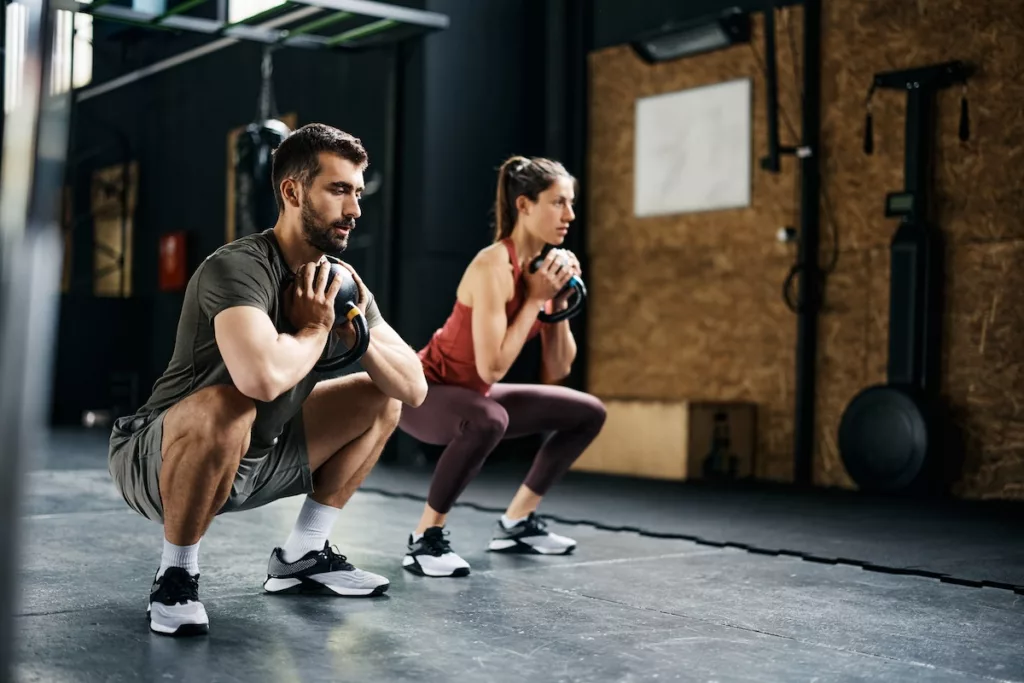
To be clear, this program is mostly for cricketers who are right of center on the squat continuum. If mobility is your number one issue, we need to address that first, no exceptions.
Earn the right to do this and you’ll thank me in the latter part of your career.
The idea behind this is to perform this plan two times a week at the start of your workout when you’re fresh, not the end.
How long the plan progresses is up to you, but we’ve had people stick to this for 24 weeks and more.
In all our strength training plans, we follow a pyramid model, starting with a foundation of muscular endurance layered with strength endurance then max power.
We find most cricketers don’t need to spend that much time in the world of max power.
Far too much emphasis is placed on maxing out strength; for us, it’s about building your strength battery, allowing you to recover faster and expand your limits.
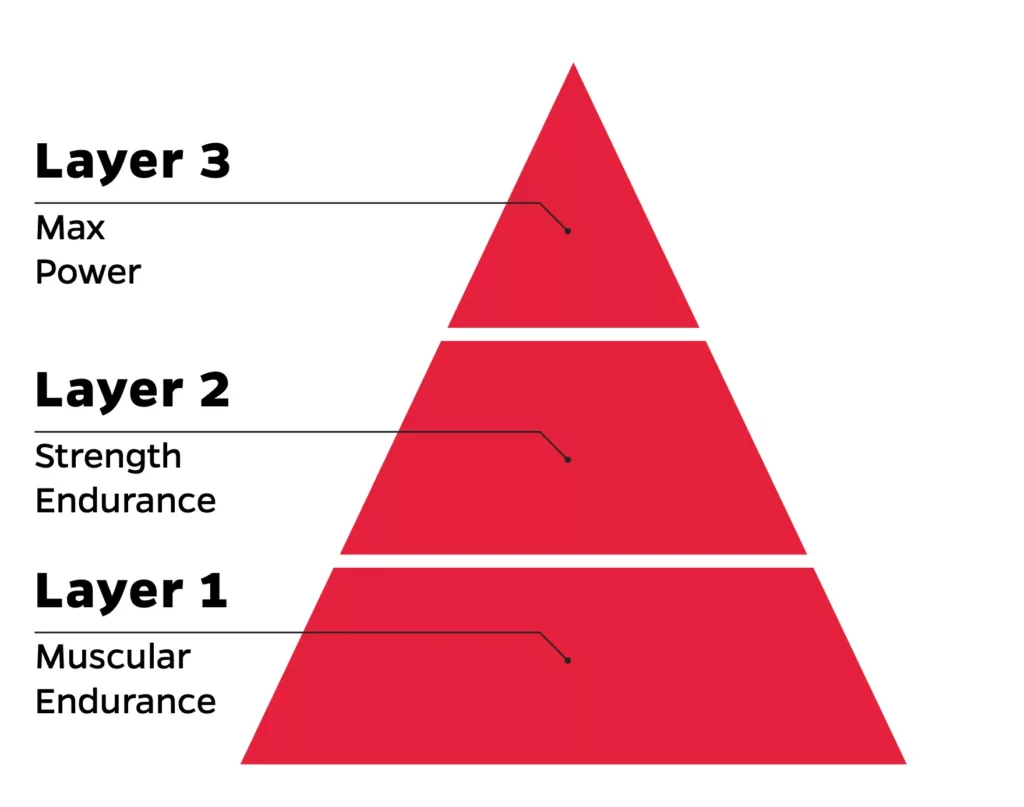
We find this workout is best performed with two kettlebells but stronger, more advanced cricketers can also perform this with a barbell.
It’s very much a volume-based program so you’re going to squat a lot, and probably something to do more in the off-season, and certainly not mid-season.
Get ready to enjoy!
The Ultimate Squat Workout Plan
15 Minute EMOM
Double Kettlebell Front Squat @20X0 Tempo
Men: Suggested 16kg-24kg (E.g. 2 x 12kg or 1 x 24kg)
Women: Suggested 10-12kg (E.g. 1 x 12kg)
Each week you will increase the weight by 2-4kg, which means in some cases you are going to be using offset kettlebells (e.g 2 x 12/14kg = 26kg).
Ideally it should be 2kg, but we know that isn’t always possible.
| Week 1: | 2 x Week @ 10 Reps (150 Reps) |
| Week 2: | 2 x Week @ 9 Reps (135 Reps) |
| Week 3: | 2 x Week @ 9 Reps (135 Reps) |
| Week 4: | 2 x Week @ 7 Reps (105Reps) |
| Week 5: | 2 x Week @ 6 Reps (90 Reps) |
| Week 6: | 2 x Week @ 5 Reps (75 Reps) |
Halfway! Congratulations on making it this far but the real work is just beginning.
Now we’re going to head back up the ladder and try to increase the weight each week just as we were doing before.
| Week 7: | 2 x Week @ 6 Reps (75 Reps) |
| Week 8: | 2 x Week @ 7 Reps (105 Reps) |
| Week 9: | 2 x Week @ 8 Reps (120 Reps) |
| Week 10: | 2 x Week @ 9 Reps (135 Reps) |
| Week 11: | 2 x Week @ 10 Reps (150 Reps) |
| Week 12: | 2 x Week @ 8 Reps (120 Reps) |
The goal by the end of week 11 is to be hitting those 150 reps with almost double the weight you first started with.
We then do a 12th week, which I call almost a deload week.
I love the use of offset kettlebells in this progression – if you want washboard abs and explosive, powerful legs for smashing the ball harder and bowling faster than ever before, by the end of it, trust me, this will get you there.
It’s highly likely you’ll stall on the way back up.
If that’s the case, keep with it; just extend the plan out a few more weeks and consider not increasing the weight on subsequent rep increases.
For example, if on Week 9 you only hit 111 reps with 32kg, go into week 10 still using 32k and hit 120 reps.
Then in week 11 stick with 32kg and try to hit all 150 reps. If you struggle, stick with 32kg until you can.
Final Thoughts: Ultimate Squat Workout for Cricketers
Squats are one of the most foundational functional movements in our lives, and for cricketers they are a must do exercise if you want to be a strong, powerful, explosive cricketer.
If your goals are to:
- Build muscle and get stronger, squats will get you there faster.
- Lose weight and get ‘toned,’ squats will get you there faster.
- Look better naked, squats will get you there faster.
- Feel and perform like an absolute badass at cricket, squats will get you there faster.
In short, squats are amazing for cricket.
They can also be damaging if you don’t have the correct foundation of mobility and strength before you progress to the next level.
We believe in good levels of mobility and strength before even attempting barbell work, both as a safety measure and as a means of progressing in your strength levels.
Barbells are an excellent tool but we use them sparingly with cricketers, as there’s a plethora of alternative methods that can get cricketers just as strong, just as fast, and sometimes faster.
James Breese
Further Reading
FAQs
What Exercises Increase Hitting Power in Cricket?
To increase hitting power in cricket, exercises that focus on building core, leg, and upper body strength are key. Squats are particularly beneficial as they strengthen the lower body and core, which are essential for powerful hitting. Along with squats, incorporating exercises like deadlifts, bench presses, and plyometrics can also contribute significantly. These exercises improve overall strength and power, directly impacting the force and speed of your cricket shots.
What are the Benefits of Squat Workouts for Cricketers?
Squats, by targeting the lower body and core muscles, provide the foundational strength needed in cricket. This strength is crucial for enhancing stability, power, and endurance on the field, directly improving batting, bowling, and fielding skills.
How Do Squats Enhance Cricketing Performance?
Regular squatting can lead to increased leg power, critical for explosive movements in cricket such as sprinting between wickets, jumping while fielding, or generating power in batting.
What are Some Recommended Squat Variations for Cricketers?
Including variations like kettlebell squats for overall strength, single leg squats for quad development, and goblet squats for accessibility and mobility offers a comprehensive approach to strengthening different muscle groups relevant to cricket.
What is the Ideal Frequency for Squat Workouts in Cricket Training
Incorporating squats about 1-2 times per week, focusing on technique and progressively increasing intensity, is ideal. This frequency allows for muscle recovery and adaptation, essential for gaining strength without overtraining.

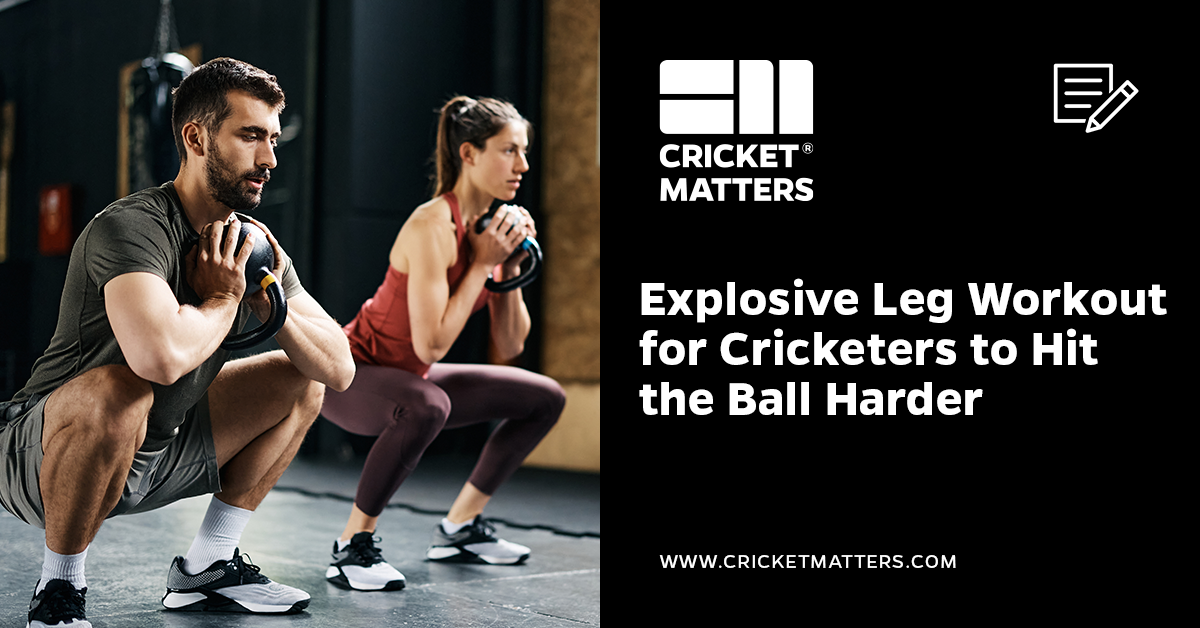
![[Case Study] Advanced Hiit Training Plan for Cricketers 4 Hiit Training for Cricketers](https://www.cricketmatters.com/wp-content/uploads/2024/04/HIIT_Training-1024x536.png)
